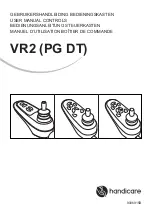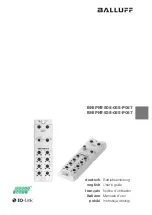
32
Low Current Readings/Alarms
The following summarizes some of the possible causes and solutions for heat tracing low current readings or alarms.
Possible Cause
Recommended Solutions
Self-regulating or power limiting
heater may be operating at higher
than design pipe temperatures due
to processing con- ditions and thus
heaters may be drawing lower current
values.
Decrease low current alarm setpoint (if approved by project engineer).
Loss of a branch of the heat tracing
circuit.
Measure total current and each branch current. Compare to design values.
Check all connections.
Breaker off.
Turn breaker back on after conferring with operations manager.
Heat tracing cable may have been
exposed to temperatures in excess of
their maximum temperature ratings
(excessive steam-out temperatures
or upset process temperature events)
and could have damaged the heater.
Replace heater.
Controller may be in error in reading
current.
Use a different current clamp type meter which is known to be accurate
and do a comparative reading. If the current measuring circuitry is in error,
investigate controls further. Note that one should only read heater currents
when the heater is 100% on.
Heater circuit may be shorter than
anticipated in the design stage.
Verify installed length (if possible) and if different review design. If length is
different but performance-wise the “as built” design is acceptable, initiate
“as built” drawing change and change controller low current setting. Check
heater set tags or markings on heater cable against installation drawings.
As an additional check, disconnect heater from power and measure DC
resistance.
Wrong heater wattage or heater
resistance may be installed.
Measure pipe temperature and measure steady-state heater current,
voltage, and length. Compare to manufacturer’s rated power curve.
Replace heat tracing cable if necessary.
Heat tracing may be powered on
wrong voltage.
Recheck heater supply voltage.
Current sensing circuitry may have
encountered a problem.
Use a different current clamp type meter which is known to be accurate
and do a comparative reading. Investigate current measurement circuitry
further. Note that one should only read heater currents when the heater is
100% on.
Field heater wiring is improperly
labeled and/or connected such that
the heater and the circuit number are
not matched.
Trace out the circuit wiring from the field back into the panel and
subsequently to the controller. Wherever possible, turn the circuit “off” and
“on” and watch for an appropriate response. If this is the problem, redo the
wiring.
Open circuit in a series resistance
circuit.
Disconnect heater from power, meg between each of the conductors and
ground for proper dielectric rating. If okay, measure resistance of circuit for
agreement with design values.





































